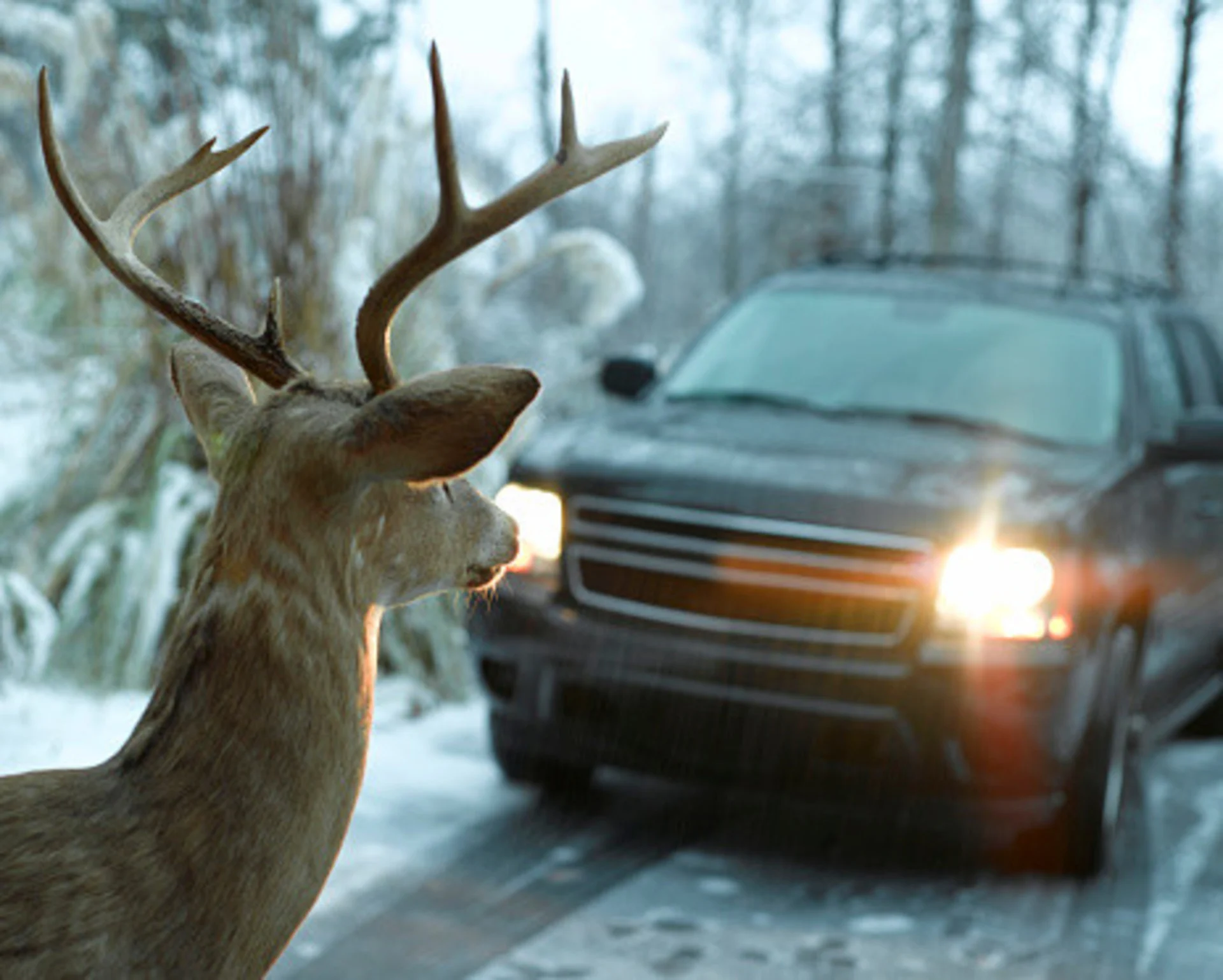
Drive safe: Tips to avoid wildlife collisions
Here are some tips to stay safe on the roads this winter.
Winter driving is a challenge on a normal day, but add wildlife to the mix and the situation can escalate quickly.
Here are some tips on how to avoid wildlife collisions.
1) Watch the signs. Wildlife warning signs are usually yellow and diamond-shaped and will feature an illustration of an animal.
They're designed to warn of potential animals ahead. While you aren't required to slow down, pay close attention.
Warning signs are usually placed in areas of frequent wildlife use or high-risk collision spots.
2) Slow down. Speed is one of the most common collision factors, according to wildlifecollisions.ca. Obeying the speed limit is an easy way to mitigate risk.
3) Plan and drive defensively. Try to predict what you would do if an animal darted toward your car. Being mentally prepared and actively aware of your surroundings can cut down on your reaction time. Make sure you're surveying both sides of the road, especially if you are in wildlife habitat.
4) Breaking and swerving. Swerving can be dangerous, especially on winter roads. Reduce your speed when you see posted signs. "If a deer is in your way, consider using your brakes, not your wheel," Wildlife Collision Prevention Program recommends on their website.
"If you have to choose between swerving or striking a moose, consider swerving. A collision with a moose, which can weigh up to 500 kgs (1200 lbs), carries a significant risk of injury or death to motorists and passengers. If a crash with a moose is inevitable, crouch as low as possible in your seat, or under the dash, as a moose's body usually ends up crushing the roof of a car completely flat."
DON'T MISS: Why road salt isn't the best solution for removing snow and ice
WHAT IF YOU CAN'T AVOID A CRASH?
Focus on where you're going, and not the animal. People tend to drive where they look.
Aim for where the animal has been, not where it is headed.
Try to hit at an angle and not a head-on collision.
Ease up on the brakes before making contact. This causes the front end of the car to elevate and reduces the risk of the animal coming through your windshield.
AFTER A COLLISION
Call for help.
Do not approach an injured animal. They can be dangerous.
Turn on hazard lights.
Warn other drivers if a dead animal is obstructing the road.
WATCH BELOW: WHAT TO DO WHEN DRIVING NEAR SNOW PLOWS AND MORE WINTER TIPS
Source | Thumbnail image courtesy: Getty Images/Stock photo.
